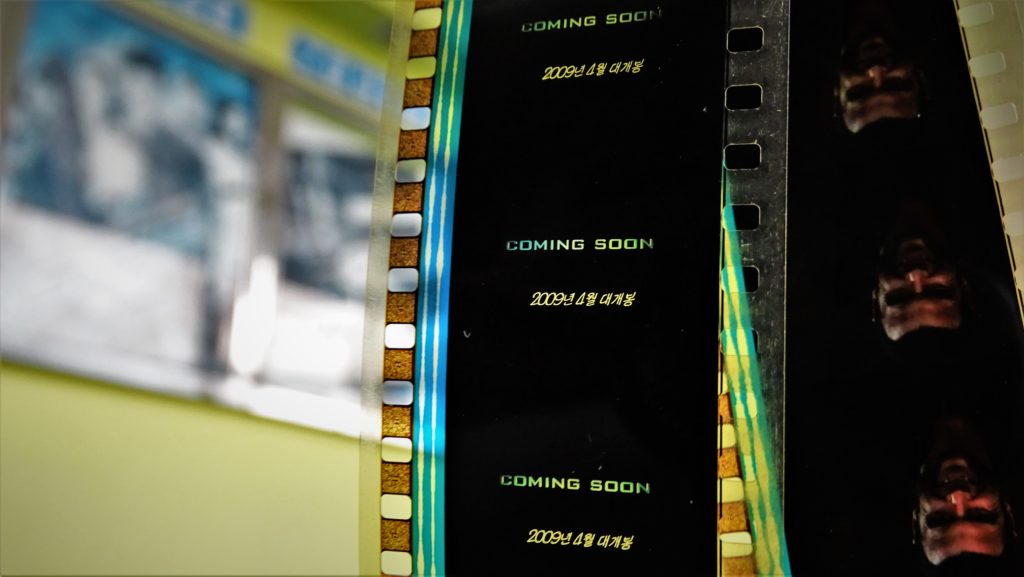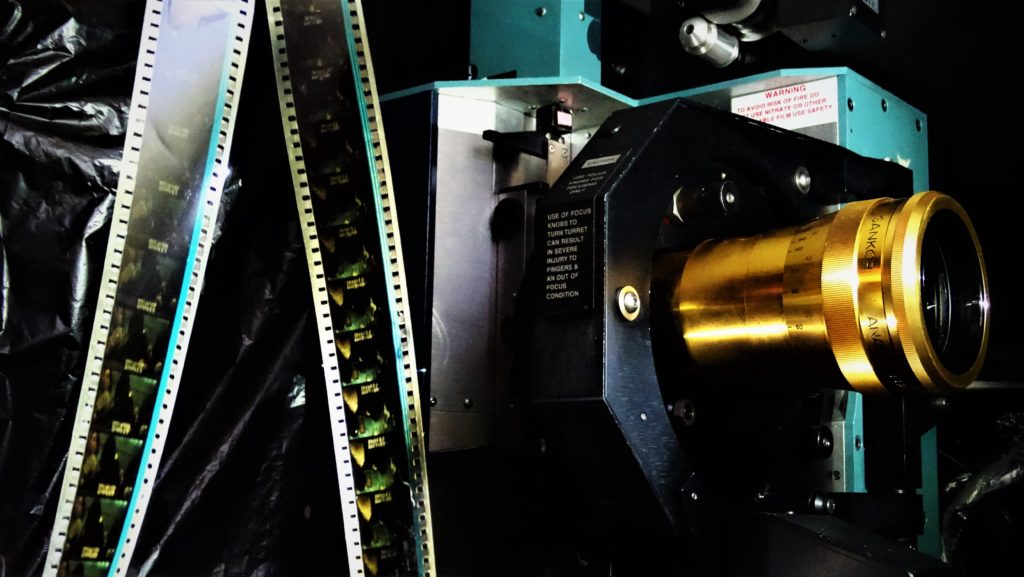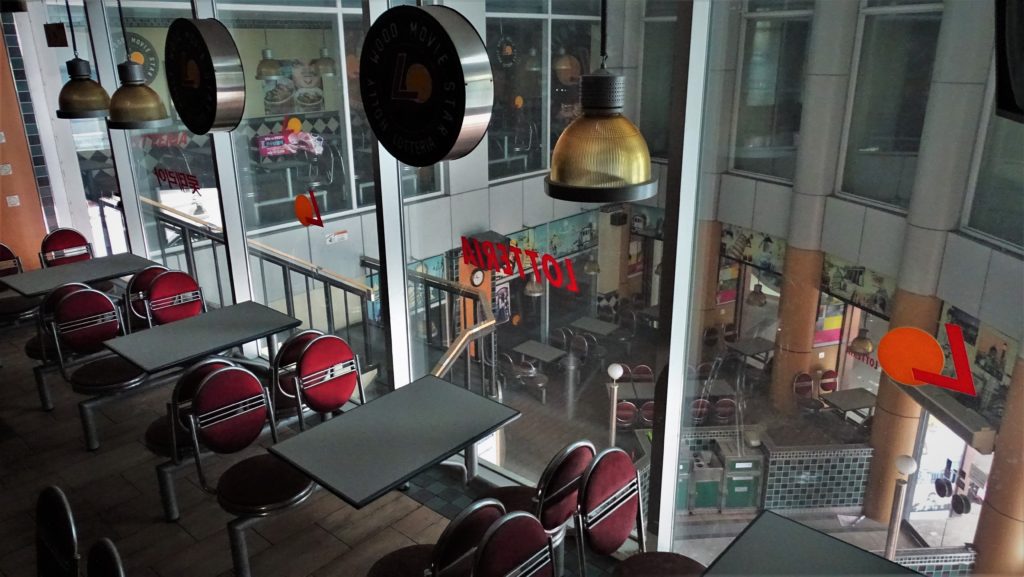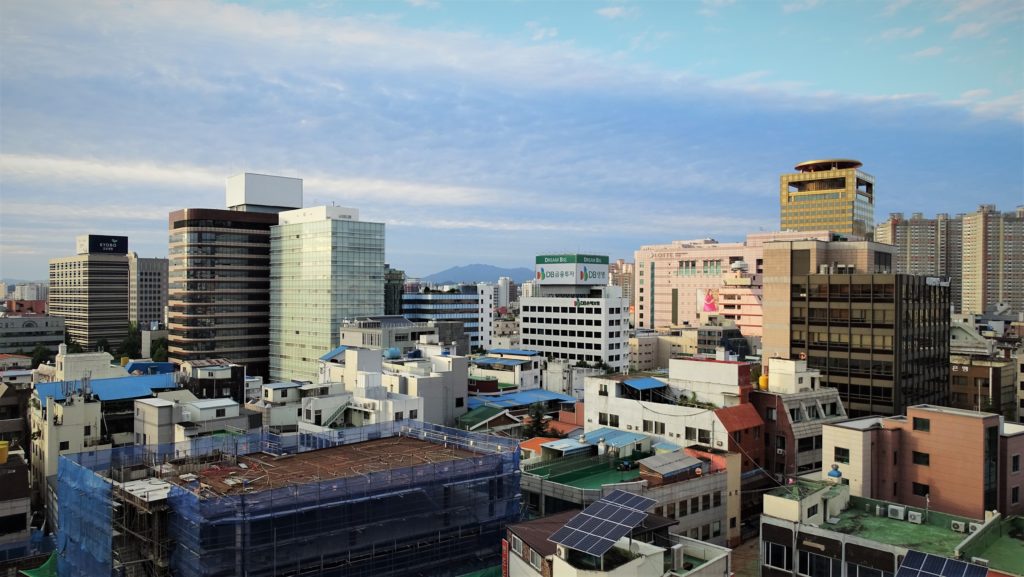A Cinematic Experience
Written and photographed by Isaiah Winters.
For years, I’d had my eye on a huge abandoned cinema downtown that always seemed impenetrable. Every six months to a year, I’d revisit it in the hope that one of the dusty old doorknobs would finally turn, satisfying an itch over half a decade in the making. Nevertheless, after years of reconnaissance and repeat attempts, nothing ever budged – that is, until last month. On that occasion, desperate for a novel discovery, I revisited the old multiplex one more time just days before this article’s submission deadline and – ka-chink! – one of its doors finally gave way.
Largely spared from vandalism and theft, the cinema was in terrific shape, with mostly dust and time to blame for its defects. The most recent movie posters included X-Men Origins: Wolverine and Watchmen, both slated for spring 2009, which showed both how long the cinema had been abandoned and just how long the movie industry has been relying on superhero movies (with no end in sight ten years later). Some of the Korean films last advertised included the thrillers Private Eye (그림자 살인) and Insadong Scandal (인사동 스캔들), also from spring of that same year. As if these weren’t conclusive enough, a few calendars hanging around the cinema confirmed its exact time of death: April 2009.

Film strips from 2009’s X-Men Origins: Wolverine soak up the incoming sunlight.After snooping around a few of the projector booths with a friend, film strips soon turned up, one from The Simpsons Movie (2007) and another from a particularly explosive part of Wolverine. By far the most captivating find were the half-dozen movie projectors still in place. Draped with plastic to keep out the dust, the large Christie P35GPS projectors came with impressive Sankor anamorphic lenses from Japan. Given that the projectors were left sitting in complete darkness, they were hard to shoot, so my photos came out blurrier than usual. Still, the projectors and the rows of empty theater seats they overlooked were fascinating to see up close.

The Christie P35GPS projector and Sankor anamorphic lens in all their glory.As for the history of this cinema, a little online research revealed that it was actually the first multiplex theater in all of Gwangju, and its launch engendered the downfall of many older theaters in the area that simply couldn’t compete. That success, however, was short-lived once other multiplex theaters with even bigger names like Megabox, Lotte Cinema, and CGV came to town and set up shop in higher-density pedestrian areas. Thus, after just ten short years, Gwangju’s first multiplex cinema closed its doors for good. Though surprising, this process is recurrent in today’s Korea, with small shop owners pushed out by medium-sized chains that themselves get outcompeted by the country’s massive conglomerates.

What was once (and may still be) the biggest Lotteria in Gwangju, 20 years on.It’s worth emphasizing just how big a deal this cinema must have been when it opened 20 years ago. It featured a two-story Lotteria that now sits exactly as pristine as the day it closed, if a little dustier. Specially branded as a “Hollywood Movie Star Lotteria,” it featured Hollywood Walk of Fame movie reel seals and movie poster décor that set it apart from any other Lotteria I’ve ever seen. The checker-tiled internal staircase and second-floor eating area gave it a spacious feel that was at odds with its old-timey chrome and red-cushioned diner chairs. It must have been an impressive sight two decades ago, though its days were similarly numbered from the start, as another fast food goliath made its debut in Gwangju not even a month later: McDonald’s.
In addition to having what was probably the biggest Lotteria then in Gwangju, the cinema also featured a large, ornately decorated Chinese restaurant on the top floor with access to an outdoor patio overlooking downtown and Mudeung Mountain. What’s more, it had a massage parlor, a wine bar, and an arcade still lined with bulky video game cabinets from the 1990s – all under the same roof. To top it all off, there was a swank underground karaoke club with lots of English gibberish adorning its walls, though one quote I found rather profound: “Everyone here is drunk on their special cocktails and their own importance.” I couldn’t have said it better myself.

In summary, this was intended to be the cinema to top all cinematic experiences in Gwangju, and yet it was a colossal failure. What it succeeded in doing was teaching me a major lesson in persistence, as years of darkening its doors finally paid off. It was also a stark reminder of just how quickly fortunes can change after mammoth businesses wade into local economies. When I finally climbed to the rooftop to snap photos of Typhoon Tapah’s approach, I couldn’t help but draw parallels with economic storms that suddenly roll in and jolt local communities. I hope we’ll weather the next ones better than this cinema did.
The Author
Originally from Southern California, Isaiah Winters is a Gwangju-based urban explorer who enjoys writing about the City of Light’s lesser-known quarters. When he’s not roaming the streets and writing about his experiences, he’s usually working or fulfilling his duties as the Gwangju News’ heavily caffeinated chief proofreader.





